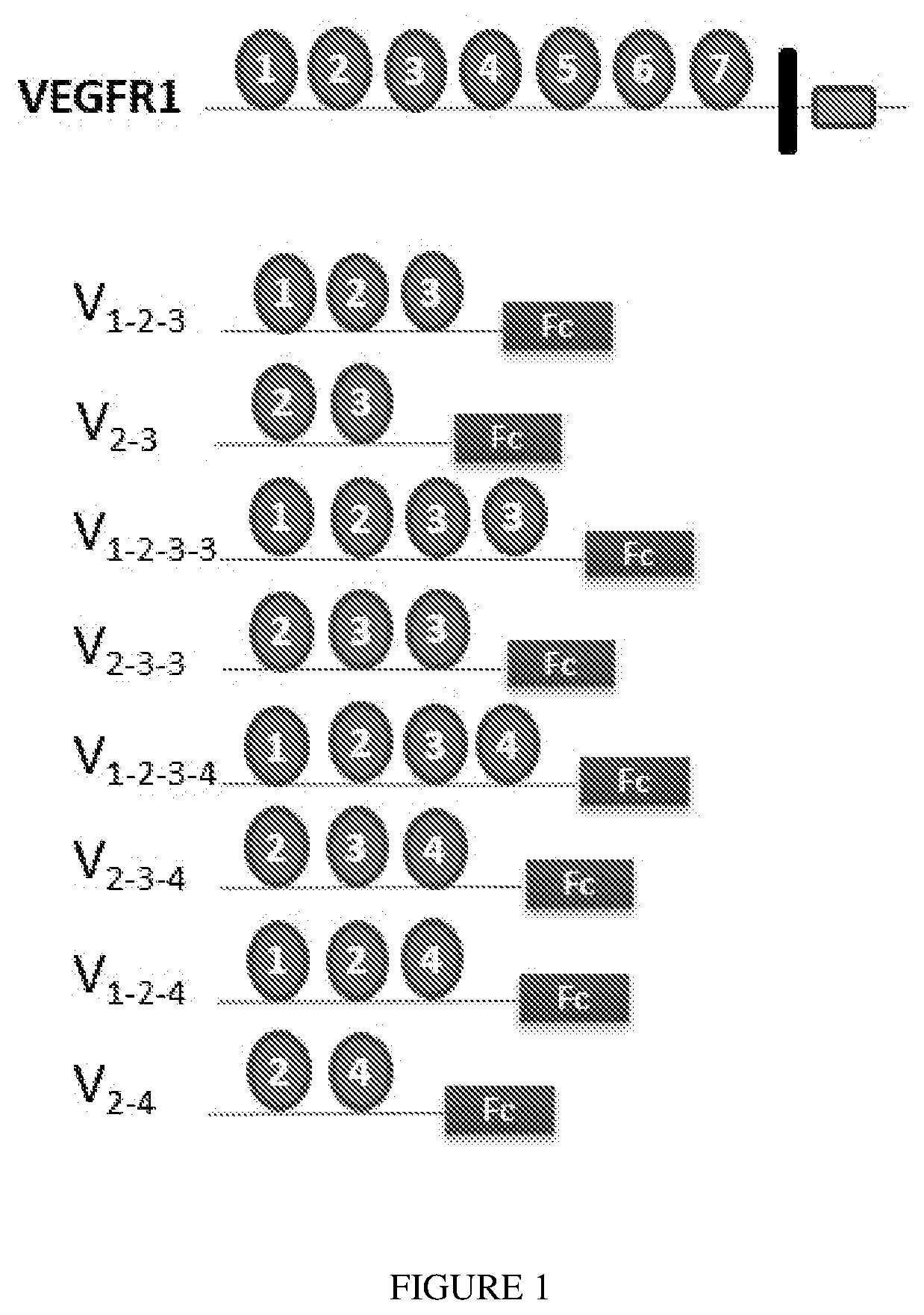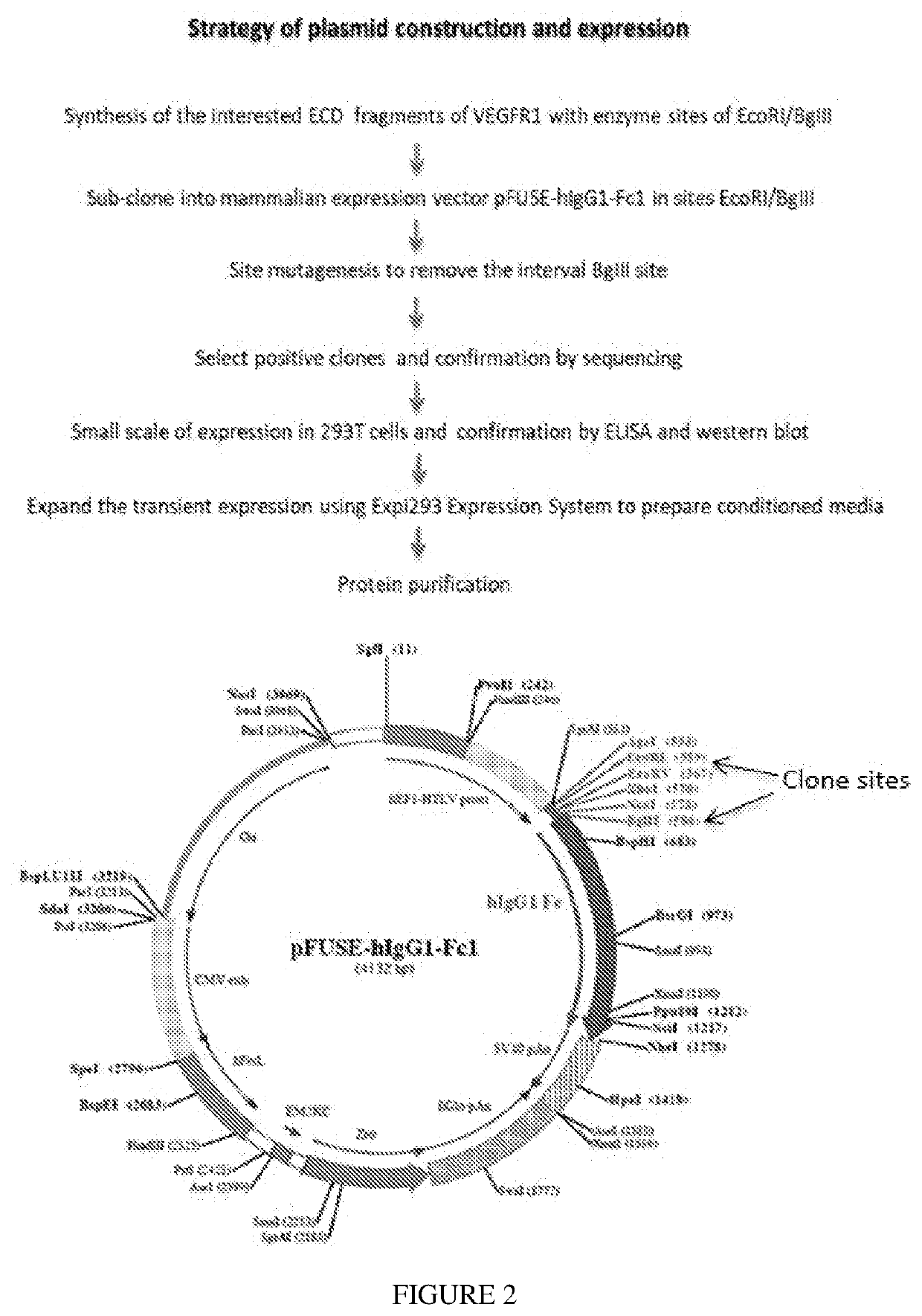Methods and Compositions for Treatment of Angiogenic Disorders Using Anti-VEGF Agents
a technology of antivegf and angiogenic disorders, applied in the field of methods and compositions for treating angiogenic disorders using antivegf agents, can solve the problems of hampered patient compliance, poor visual outcomes, and ultimately, the systemic half-life of this molecule was hampered, and achieves strong heparin-binding characteristics and potent neutralization of vegf activity
- Summary
- Abstract
- Description
- Claims
- Application Information
AI Technical Summary
Benefits of technology
Problems solved by technology
Method used
Image
Examples
examples
[0073]In embodiments, the present invention therefore discloses anti-VEGF agents that are novel and improve on existing anti-VEGF agents, including aflibercept, owing to high biological potency combined with strong heparin-binding characteristics. The heparin binding is predictive of a longer half-life and consequently reduced frequency of administration.
[0074]The invention provides that heparin-binding mediated by D3 (or other Ig-like domain) of VEGFR128, while a disadvantage for systemic administration, can confer important advantages for intravitreal (or other local) administration. Indeed, the ability to bind HGPSG, key components of the extracellular matrix29, may promote accumulation in the vitreous as well as retinal penetration30. The invention provides a series of VEGFR-1 Fc fusion constructs having differential abilities to interact with HSPGs.
[0075]FIG. 1 provides a schematic representation of the constructs employed here. FIG. 2 illustrates the vector employed and the cl...
PUM
 Login to View More
Login to View More Abstract
Description
Claims
Application Information
 Login to View More
Login to View More - R&D
- Intellectual Property
- Life Sciences
- Materials
- Tech Scout
- Unparalleled Data Quality
- Higher Quality Content
- 60% Fewer Hallucinations
Browse by: Latest US Patents, China's latest patents, Technical Efficacy Thesaurus, Application Domain, Technology Topic, Popular Technical Reports.
© 2025 PatSnap. All rights reserved.Legal|Privacy policy|Modern Slavery Act Transparency Statement|Sitemap|About US| Contact US: help@patsnap.com



